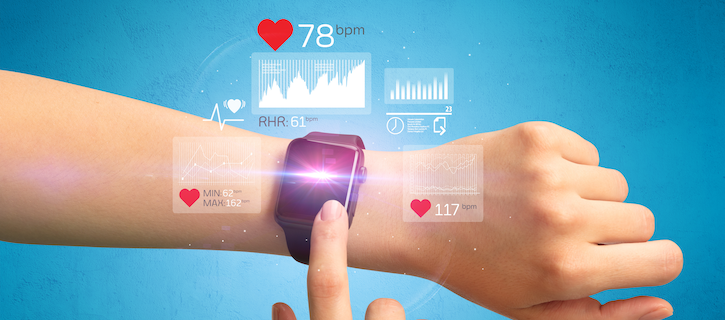Wearables Accurately Predict Patient Outcomes
Step trackers can help identify disease progression and mortality.

Photo/Thumb have been modified. Courtesy of ra2 studio - stock.adobe.com.
Wearable devices give patients more control over their health data and allow providers to monitor the progression of their patients more easily.
And wrist-worn step trackers can estimate exercise capacity and determine the health status of patients, rather than the traditional six-minute walk distance test, researchers from Intermountain Healthcare in Salt Lake City said at European Respiratory Society International Congress 2019.
“Being able to distill step counts into this clinically important metric is a first step in being able to think about how to use step counters in order to better manage health and detect deterioration earlier,” said lead investigator Denitza Blagev, M.D., a pulmonary and critical care physician at Intermountain Healthcare.
Researchers conducted a three-month trial with 52 patients, including adults with a history of respiratory problems during periods of elevated air pollution.
The research team found that they could effectively estimate a patient’s six-minute walk distance test results using the counters instead of having patients go into a clinical setting.
The six-minute walk distance test is a traditional measure used to assess exercise capacity. Patients walk for six minutes and based on how much distance they cover, physicians can predict outcomes and mortality for patients with chronic obstructive pulmonary disease and cardiovascular diseases.
“Normally, the (six-minute walk distance) test is done every few months or once a year,” said Blagev. “Now, we may be able to measure patients on a regular basis and know if we need to intervene if their estimated (six-minute walk distance) by step count changes.”
Frequent measurements could lead to more information about the disease progression, which Blagev said is a “significant improvement and enhanced convenience” for patients. Not to mention, wearables can be a more cost-effective option, she added.
Get the best insights in digital health directly to your inbox.
Related
Physiological-Sensing Textiles Could Lead to Sleep-Related Insights
Kaiser Uses Samsung Wearables to Reduce Hospital Admission Rates for Cardiac Rehab Patients
Podcast: Match Made in Hospitals — Patient-Matching Technology Can Improve Healthcare
September 21st 2021Clay Ritchey, CEO of Verato, highlights the administrative and financial benefits that patient-matching technology can provide hospitals and health systems, as well as how it can improve the patient experience.
Podcast: Using Digital Solutions to Address Technology Shortfalls with Citius Tech Senior VPs
July 29th 2021In an interview recorded earlier this year, Chief Healthcare Executive Associate Editorial Director Mary Caffrey spoke with 2 leaders of Citius Tech about meeting healthcare challenges with digital solutions.